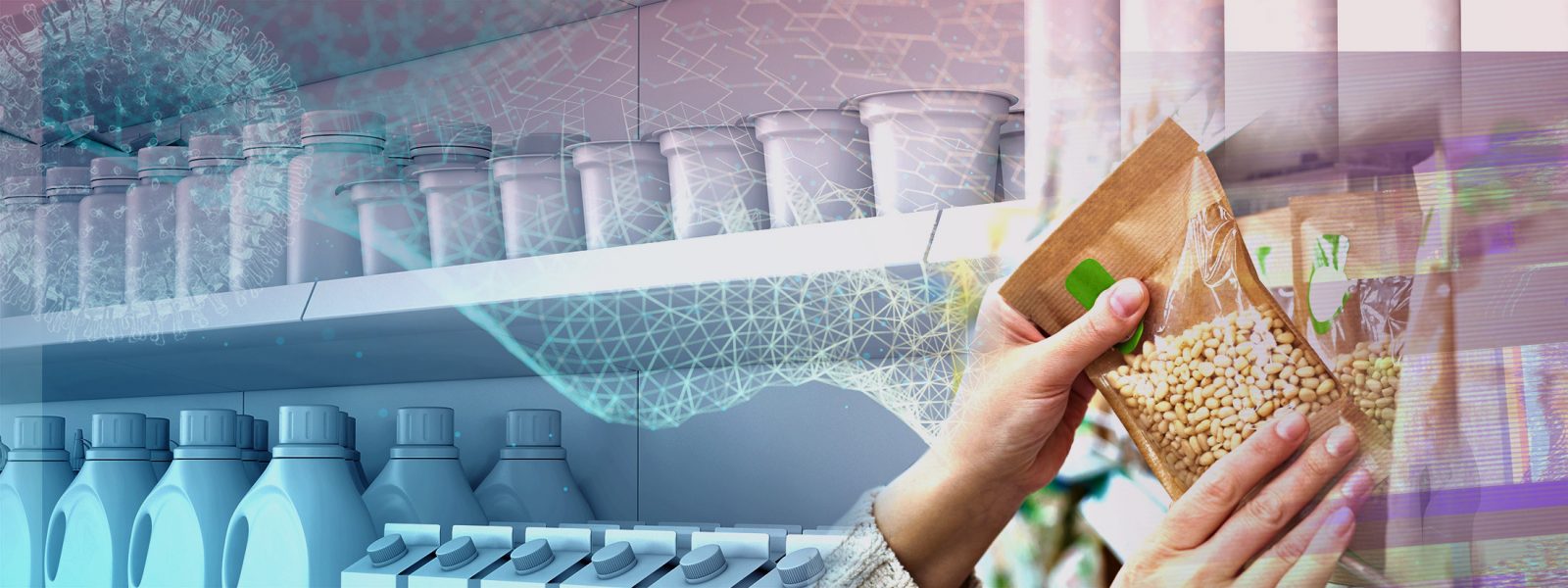CPG’s New Business as Usual: Tactics to Prepare for the Future
[Editor's note: this article was published in April of 2020, during the early part of the pandemic. A lot has changed since then, but the lessons shared below are still incredibly important to consider as companies continue to adapt and transform.]
“The pessimist sees difficulty in every opportunity. The optimist sees the opportunity in every difficulty.” – Sir Winston Churchill
There is difficulty everywhere. The stock market, the news, politics, even at the grocery store. These are unprecedented times, but as an optimist, I believe we will learn, adapt and thrive again.
For businesses to prosper, there are new approaches, new delivery methods and new business models waiting to be digested and incorporated into everyday life. The question is… how do we get there from here?
I am a classically trained CPG professional who grew up in one of the ‘big CPG machines,’ and I know how things are typically done to achieve lasting brand value and equity. There is a proven methodical approach that has usually created significant value for individuals and organizations alike. I have also been fortunate enough to work with several large global CPG organizations and I know that many also understand that what was good enough before is not good enough anymore.
As days go by and challenges mount, what actions will you take to adapt and survive in the near-term? Thinking ahead, how will your business look different? What can you do now to prepare for this future?
The Limitations of Our 'Absolutes'
We are creatures of habit that evolve in steps, taking what has worked in the past and modifying it… a little. The CPG industry – like many others – focuses on meeting new demands through creative solutions based on assumptions that have proven successful over the years. Here are a few key things I learned ‘back in the day’ that, until a month ago, were absolutes:
- Interact directly with the consumer – Leverage in-person ethnographies, monitor grocery store behaviors, run focus groups and perform observational research
- Perform hands-on new product development – Experiment and test ideas with consumers, employ trial-and-error development, perform physical testing of shelf stability, packaging and distribution requirements
- Streamline operations based on financials – Optimize procurement’s power to find lowest costs providers, optimize manufacturing capabilities to minimize downtime and maximize throughput on equipment, work to drive down capital costs
Lots of interactions… lots of ‘touches’… this is the way billion-dollar brands were built – and are still being built.
And while new techniques and technologies are coming onto the market with the promise of transforming businesses, they don’t have the track record of how it affects the organization… OUR organization.
For new, small CPG companies, adopting new techniques is critical for success. But for the leaders in established global organizations – is the risk/reward equation worth the necessary time to communicate to the Street, to the C-Suite and to the boss? For many, risk causes hesitation. A CPG leader once told me about risk: “I love the idea, and the revenue, volume and profitability all look appealing. I just don’t think I’m willing to do things that differently or take on any risk during my watch.”

Rethinking our Assumptions
The last month has caused all of us to take a pause and reflect on our assumptions. Handshakes after every face-to-face meeting? Flying to our other offices to meet with our team? Constantly chasing cheaper manufacturing in Asia? Perhaps we need to rethink – and adjust – some other ‘given’ practices.
To thrive, organizations will need to adapt and evolve how they discover, create, make and sell their products. They will need to build upon data, analytics, modeling, smart connectivity and automation.
What if we modify our thinking a bit, and focus on how we can leverage existing digital capabilities so we can:
- Understand the consumer – Identify rapidly evolving trends through advanced analytics, gain perspectives based on always-on active monitoring research, understand how shoppers engage, purchase and comment on products.
- Perform virtual new product development – Leverage digital twins and modeling/simulation to predict new products that will match evolving consumer interests, use modeling and simulation to determine shelf stability, packaging and distribution requirements
- Optimize operations based on financials – Develop operational efficiency through automation that relies more on data and less on operator ‘know-how,’ optimize procurement’s power to find low cost providers across a network of suppliers with redundancy built on connected specifications, optimize throughput through smart connected operations that dictate when preventative maintenance should happen while minimizing impact on operations
Lots of modeling… lots of ‘scenarios’… this isn't the future, this is TODAY. This is the way billion-dollar brands will excel in the future.
This new environment focuses less on ‘how it was done’ and more on ‘how we can do it,’ leveraging data and technology to drive speed to decision making, speed to market, and most importantly, speed to delighting the consumer. Digital capabilities and digital transformations are here today and are being adopted by many organizations to enable this new reality.

Focus Areas to Prepare for the New Normal
At some point, consumer 'touches' will come back, but it likely will not be the same. Crises serve as a catalyst for change, ushering in new approaches, new models and new technologies. To thrive in the new reality, here are a few areas for focus:
- Data – CPG manufacturers have volumes of accumulated data about products, customers, consumers and operations. Drawing actionable insights from enterprise data remains a challenge due to incomplete, inaccurate and inconsistent data sets. Focus on what data is important, and focus on its quality, security, governance and how it combines with other data to generate valuable insights. Invest time in creating the right process and using the right systems to generate actionable data.
- Analytics – Analytics should be built on a solid data foundation. Fully leveraging analytics requires new talent, new organizational structures, and the ability to combine mathematical, technical and business capabilities. Explore data to create initial observations and simple trends. Explain observations and trends through the measurement of causal relationships and correlations between variables.
- Modeling & Simulation – Creating a digital representation of a product requires data and analytics to be successful. Leverage a digital twin (a digital representation of the physical product) to enable testing, analysis and performance improvements without entering a lab. Determine what data/attributes can articulate what a product is in digital form. Create models that test these attributes and observe what will happen if certain actions were to happen in the physical world. Adjust the digital twin and re-test, all before having to touch the physical product.
- Smart Connectivity – Bringing the data, analytics, modeling and simulation together make prescriptive recommendations and optimization a reality. Identify key indicators for quality outliers and how manufacturing nuances can play a part in controlling them. Initiate changes and maintenance based on performance parameters and take the guess work out of what and when they should happen.
Remarkably, many of these concepts and ideas probably seem like ideas ‘for the future.’ In reality, they are already in practice across other industries, with adoption only just starting within CPG.
Conclusion
In these unprecedented times, priorities have shifted, and companies need ways to reduce near-term risk and transform to deal with the impacts – both today and tomorrow. Despite rapidly changing external factors, you still need to run your business and take actions to adapt and survive.
Thinking ahead, when the crisis of today is behind us, our world (and our businesses) will look different. As companies, industries and economies recover, coping with that change and continuing to adapt for the future will become more important than ever.
How are you going to be an optimist and find an opportunity to drive your company forward in these challenging times?

